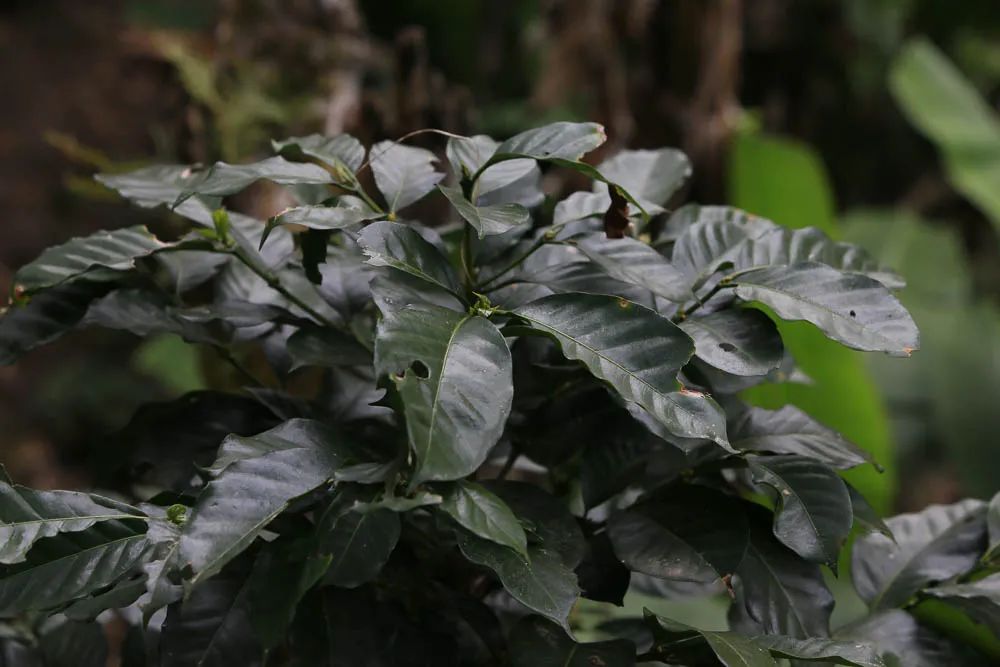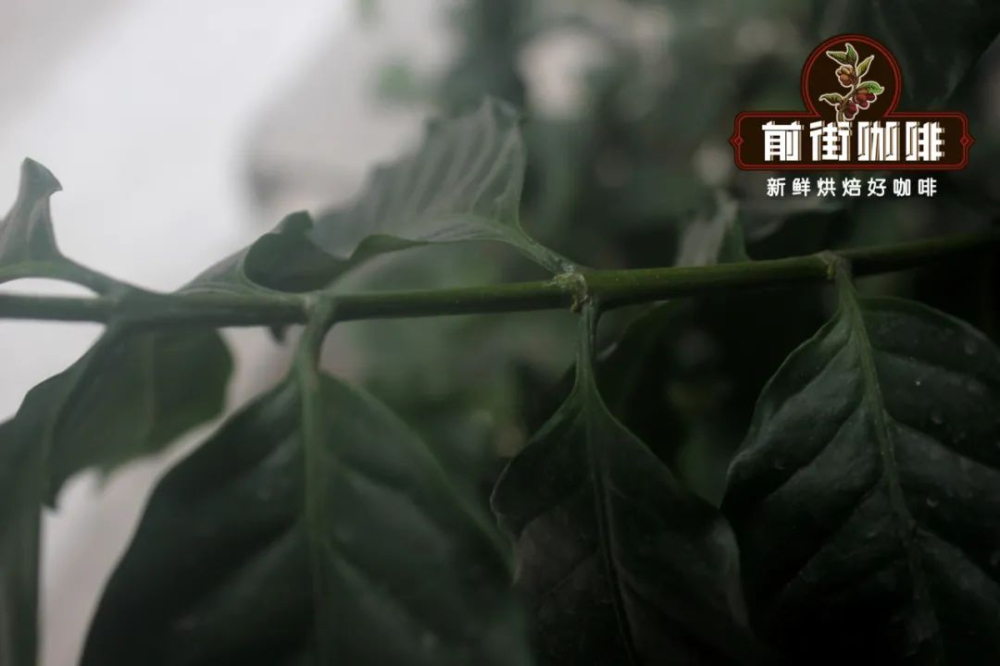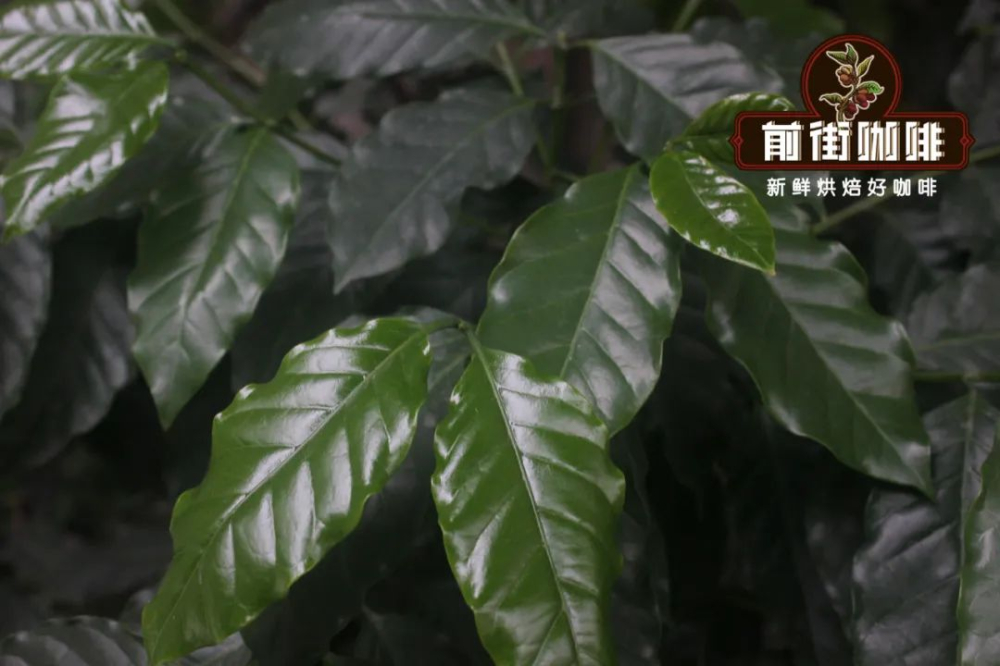What kind of Coffee is Catimor? is catimor Coffee Arabica genetic background?
Katim variety
Catimor, from the cross between timor and Kaddura, was developed in 1959 by the Portuguese Coffee Leaf Rust Research Center (CIFC). Its research direction is disease resistance and high yield. It began to be popularized in Brazil in the 1970s and 1980s. Katim variety occupies a place in Central and South American coffee varieties because of its disease resistance and high yield. The occasional outbreak of coffee leaf rust crisis in Central and South America has also contributed to the application of Katim varieties.

Inheriting the Robusta Robusta gene from Tim, Katim varieties are more resistant to coffee berry disease (CBD) and coffee leaf rust, as well as stronger resistance to diseases and insect pests, but they are often criticized for their performance in the cup. Katim varieties showed sub-immune or extremely high resistance to leaf rust, and its plant type was compact, which had a certain inhibitory effect on longicorn beetles that mostly lay eggs in the bare parts of the branches, and the yield was high and the phenomenon of big and small years was not prominent.
When planting at low altitude, Katim's cup test performance has no obvious advantages and disadvantages compared with other commercial varieties. Planted above 1200 meters above sea level, the flavor in Katim Cup is obviously inferior to that of Bourbon, Kaddura and Kaduai.
Plant characteristics of Katim
The Katim variety has exuberant growth, stable sub-characters, emerald green leaves of crown buds, dark green leaves of the whole plant, columnar shape, short internodes, many branches, wide adaptability, strong drought resistance, and certain cold resistance.

In terms of appearance, Katim coffee seedlings have shorter branch nodes and shorter distance between nodes, which allows coffee trees to bear more fruit, which is one of Katim's willingness to have higher yields per plant than other traditional low-yield varieties.
Katim varieties have shorter plants and more compact planting density (short distance between trees), which is one of the reasons why Katim varieties have higher yields than other traditional varieties in a certain area. At the same time, short plants can be picked easily without additional pruning.

Katim varieties are characterized by high yield, short plants and close planting.
At present, 99% of Yunnan's coffee production comes from the Katim variety. Therefore, what we usually call Yunnan small-grain coffee actually refers to Yunnan Katim.
The dispute over the flavor of Katim coffee
Katim's flavor has always been a controversial topic in the circle. As mentioned earlier, Katim comes from the cross between Kaddura and Tim, and Tim is a variety containing Robusta gene, which gives Katim super vitality. The high yield and bourbon characteristics of the other half Kaddura give Katim more flavor performance.
There is no doubt that Katim is successful in terms of yield and the ability to resist disease, drought and cold, but as the saying goes, "you can't have both fish and bear paws." Qianjie Coffee before sharing, high-quality coffee trees are mainly grown in high-altitude areas, while the large temperature difference between day and night brought about by high altitude makes coffee trees grow slowly and accumulate more sugar or nutrients, which is the source of delicate flavor.
On the other hand, the actual harvest time of Katim varieties from the planting belt is shorter than that of traditional varieties, and the accumulation of nutrients is not as good as that of traditional varieties which need to grow for a long time.
In addition, high yield is bound to bring about dispersion of nutrients. Just like the same cake, cut into four or eight, just look at the number of eight may be more, but four pieces are bigger.
The Robusta gene may also increase the chlorogenic acid content of the Katim variety (Robusta's chlorogenic acid content is much higher than that of the Arabica variety). But chlorogenic acid is an organic acid that brings bitterness and unpleasant acid to the taste of coffee.
Therefore, Katim although high-yield, but the pursuit of high-quality coffee flavor performance today, Katim may be difficult to satisfy some of the taste picky glutton. Take Costa Rica as an example. Costa Rica became independent in 1821 and began to vigorously develop the coffee industry in order to promote economic development. In 1989, Costa Rica legislated to ban the domestic cultivation of Robusta and began to boycott the Catimor variety.
Although the flavor is not as good as other varieties, Katim also occupies many producing areas as the main breed. Take Yunnan as an example, we might as well find out the flavor of Katim. Qianjie chooses the alpine Katim coffee beans from Lujiangba, Baoshan, Yunnan Province. Qianjie thinks that the quality of Katim here is relatively high quality in Yunnan as a whole. It can represent the flavor characteristics of Yunnan coffee producing area.
Qianjie coffee roasting scheme

The furnace temperature is 190 ℃, the firepower is 120, and the throttle is set at 3; the temperature recovery point is 1 ", and the throttle is opened to 4 at 145℃, and the firepower remains unchanged; when the furnace temperature is 166℃, the bean watch turns yellow, the grass smell disappears completely, and enters the dehydration stage. When the furnace temperature reaches 188℃, the firepower is adjusted to 60 ℃, and the throttle is 5. The smell of toast obviously changes to the smell of coffee, which can be defined as a prelude to an explosion. At this time, it is necessary to listen clearly to the sound of the explosion point. When the sound of the explosion point begins to explode, the throttle will remain unchanged. After an explosion, the development will take place for 3 minutes, and 198 ℃ will be put into the pot.

After baking, the cup test found that its entrance is soft, Asian herbal aroma, soft acidity, mellow balance, rich layers, Yuyun dark chocolate, honey, sucrose taste obvious, after complete cooling, brown sugar flavor.
Important Notice :
前街咖啡 FrontStreet Coffee has moved to new addredd:
FrontStreet Coffee Address: 315,Donghua East Road,GuangZhou
Tel:020 38364473
- Prev

Colombia coffee varieties castillo coffee beans where castillo coffee is good to drink
Due to the importance of coffee crops to Colombia's economy, Colombia invests far more in scientific coffee research than many coffee-producing countries. Colombia's National Coffee Survey Center (Cenicafe), run by the National Coffee Growers Federation (FNC), is the world's largest coffee producer.
- Next

What kind of coffee do you have in Brazil? is Brazilian coffee good? are Brazilian coffee beans good?
More information about coffee beans Please follow Coffee Workshop (Wechat official account cafe_style) Coffee Workshop (official account cafe_style) Coffee Workshop originated in Brazil, although it is now found in countries as far away as Haiti, it is a hybrid of Icatu and Catuai, available in red and yellow. Like its mother (or father?), it is a hardy variety that performs well in windy areas. it
Related
- Beginners will see the "Coffee pull flower" guide!
- What is the difference between ice blog purified milk and ordinary milk coffee?
- Why is the Philippines the largest producer of crops in Liberia?
- For coffee extraction, should the fine powder be retained?
- How does extracted espresso fill pressed powder? How much strength does it take to press the powder?
- How to make jasmine cold extract coffee? Is the jasmine + latte good?
- Will this little toy really make the coffee taste better? How does Lily Drip affect coffee extraction?
- Will the action of slapping the filter cup also affect coffee extraction?
- What's the difference between powder-to-water ratio and powder-to-liquid ratio?
- What is the Ethiopian local species? What does it have to do with Heirloom native species?

